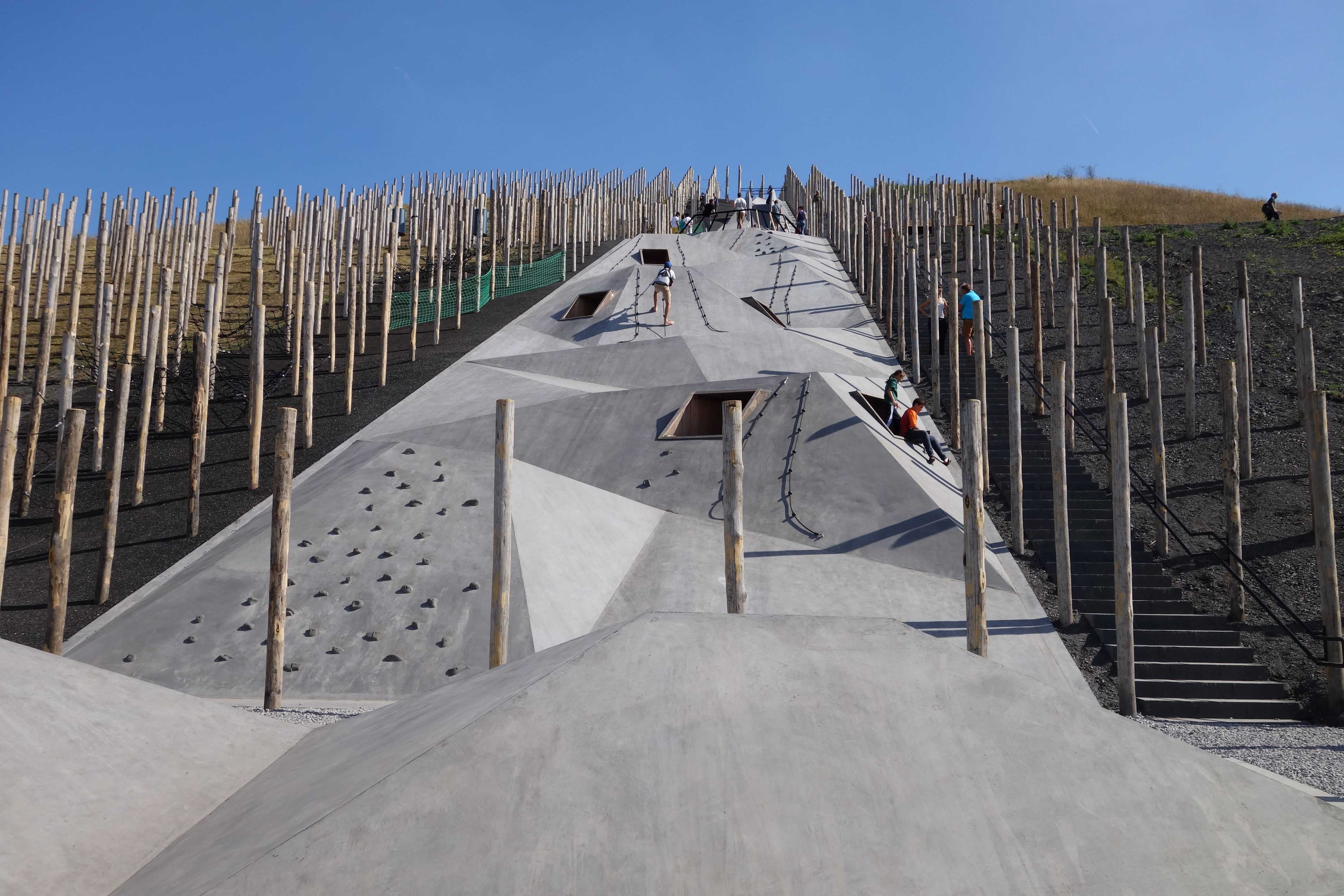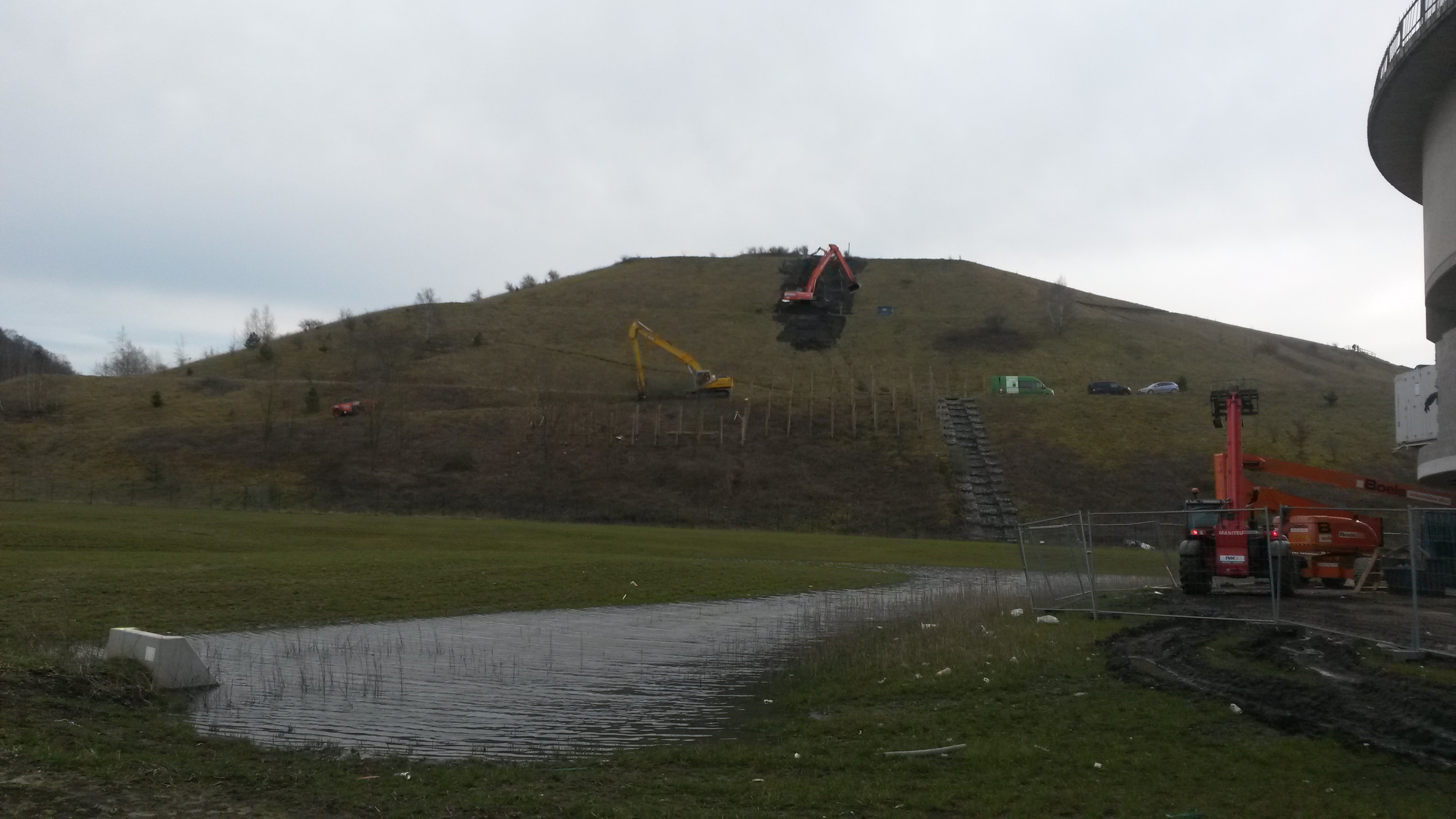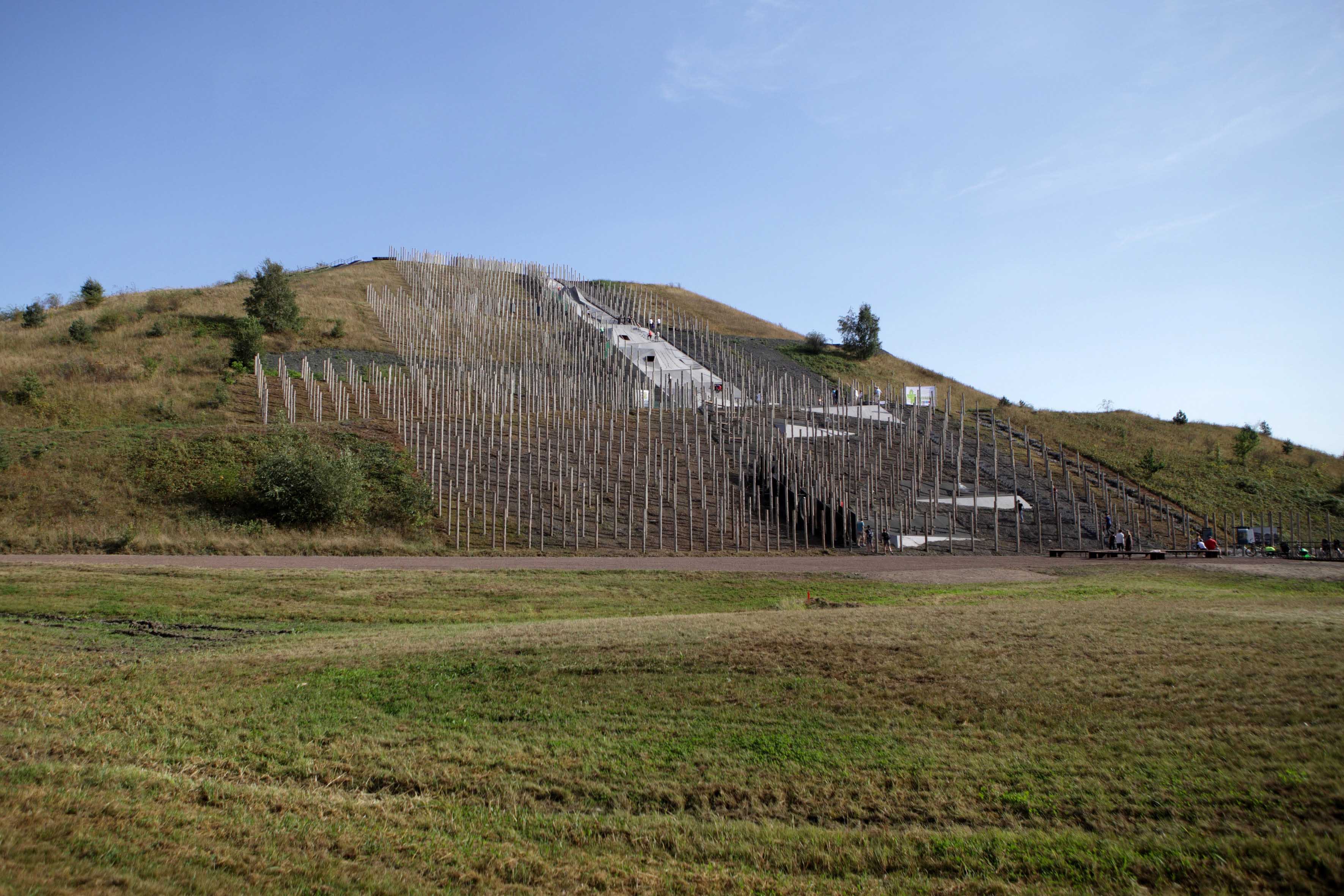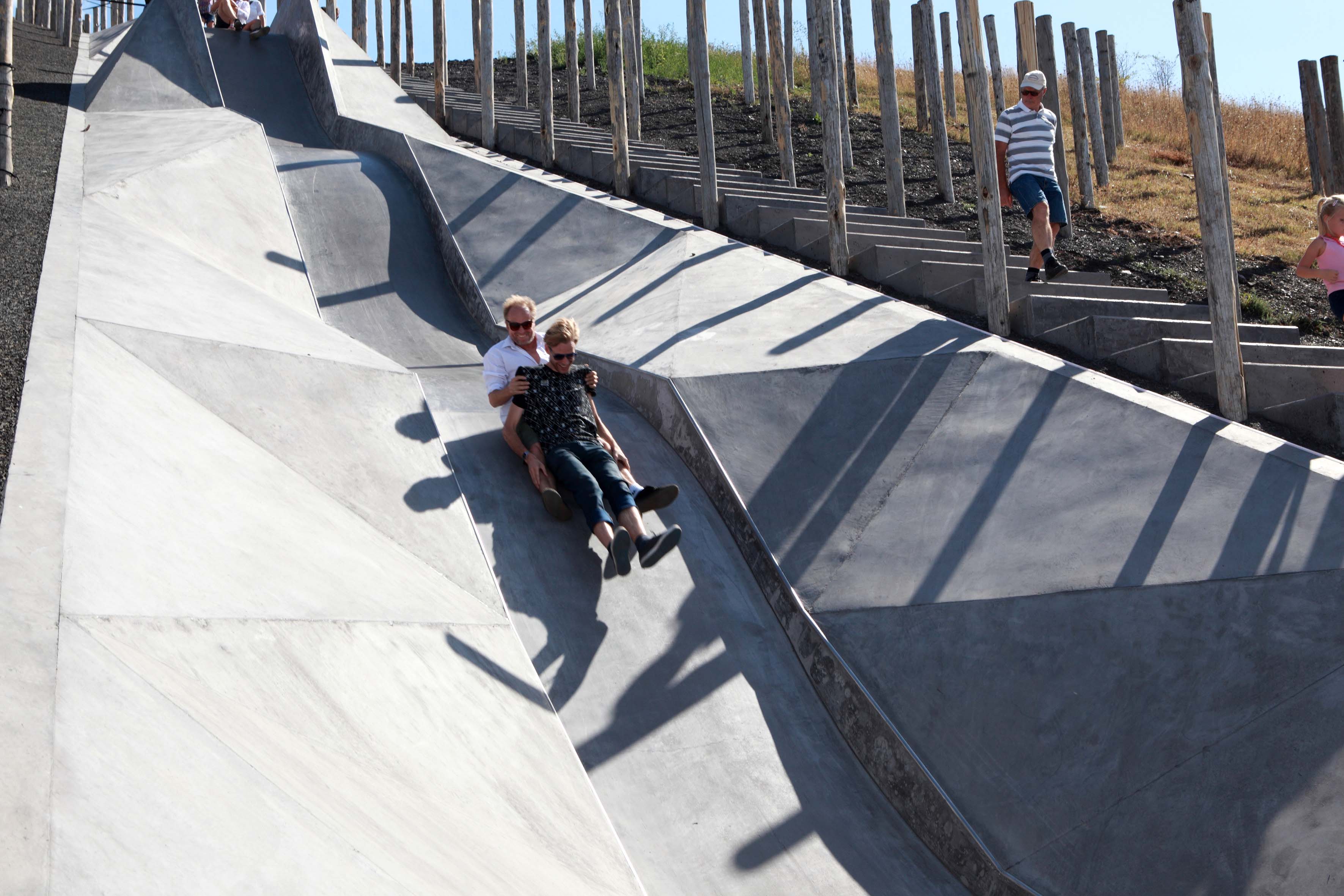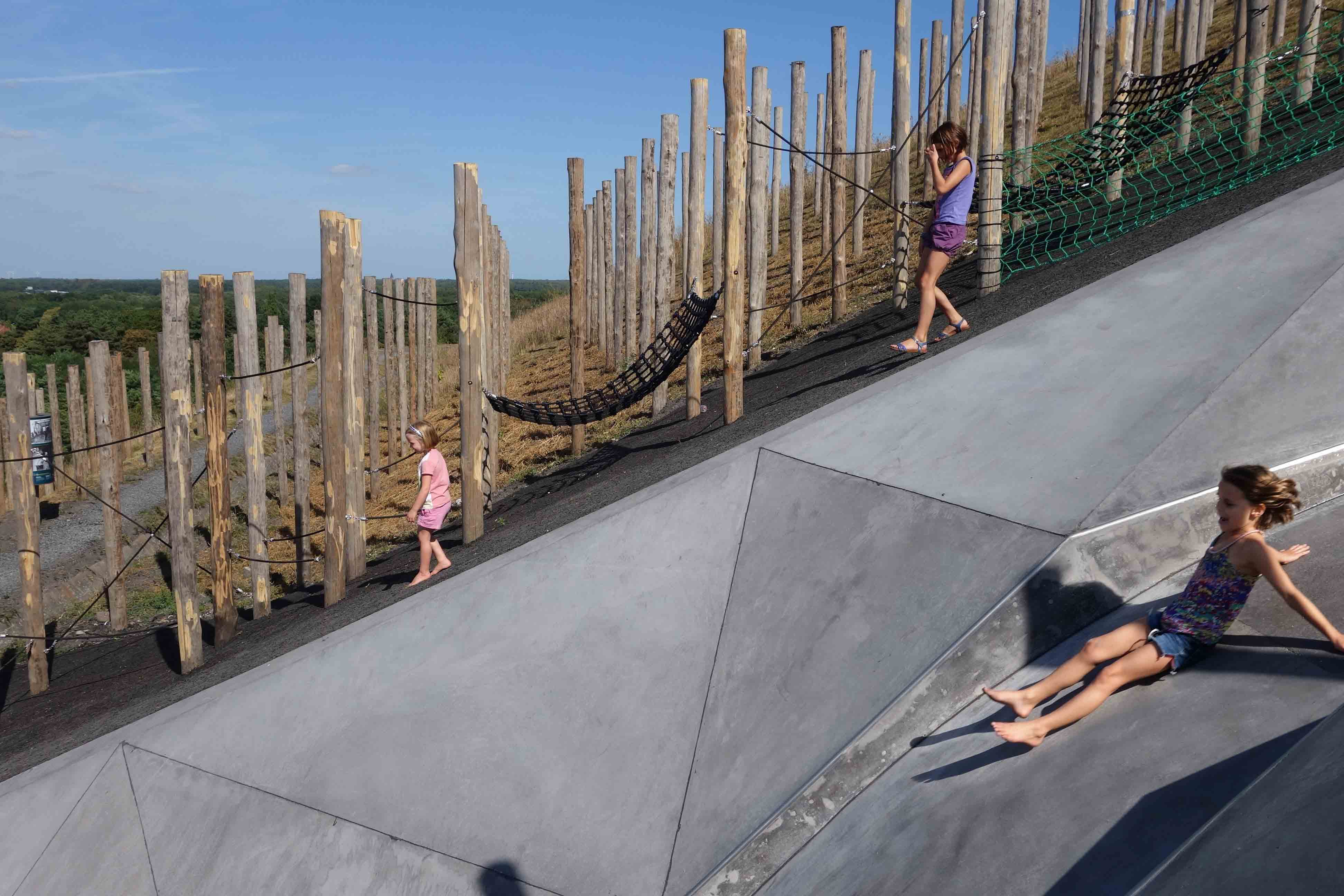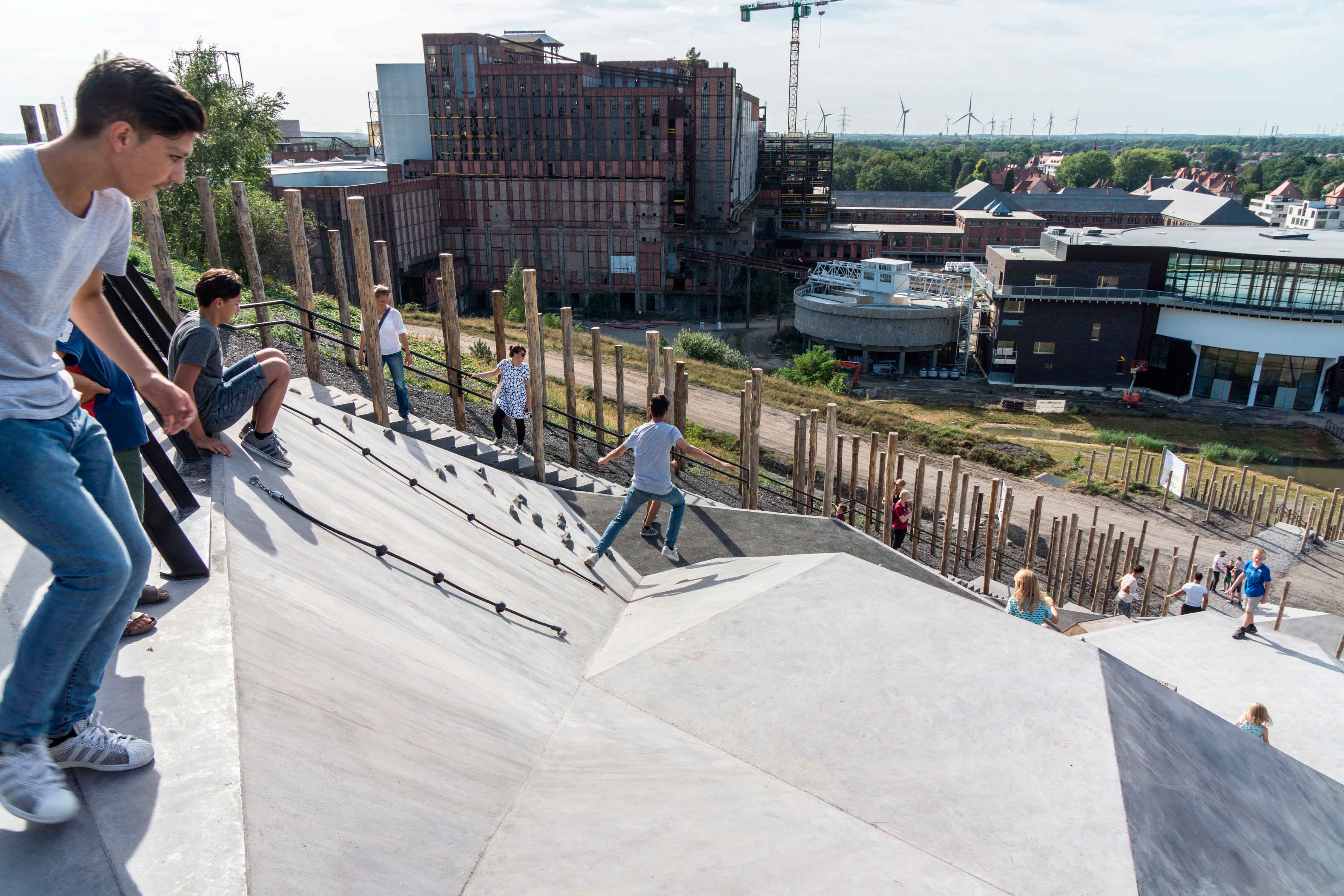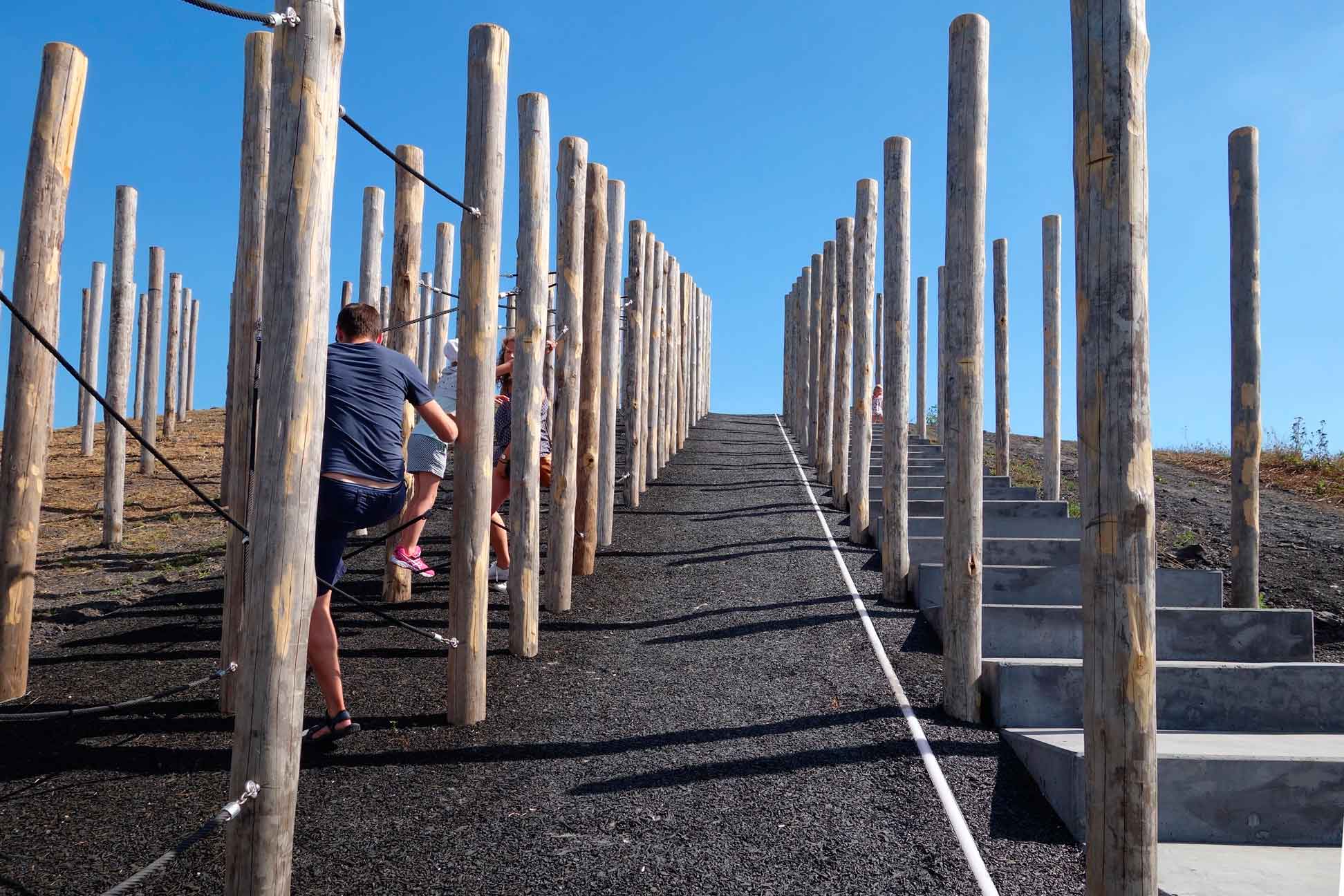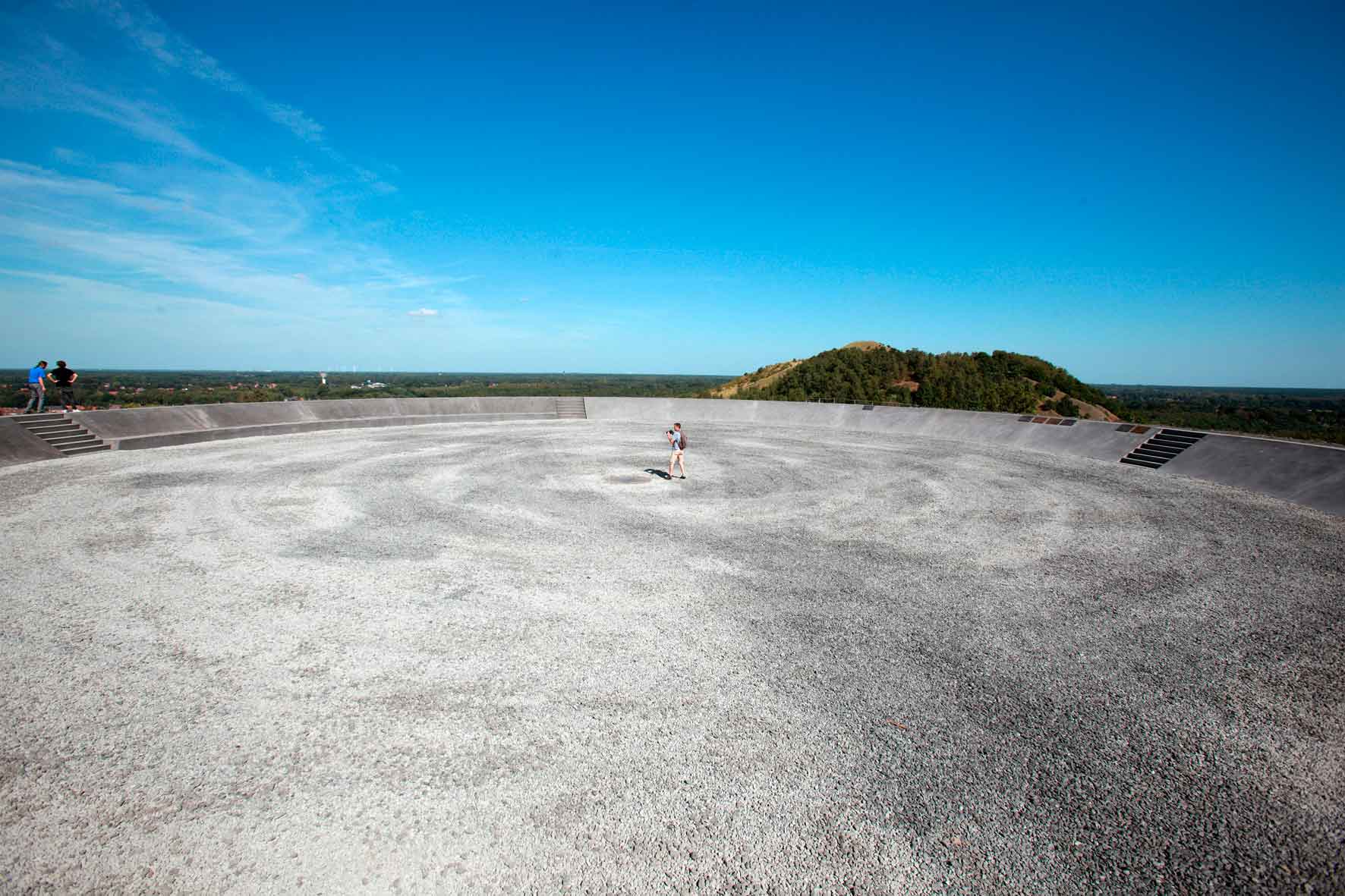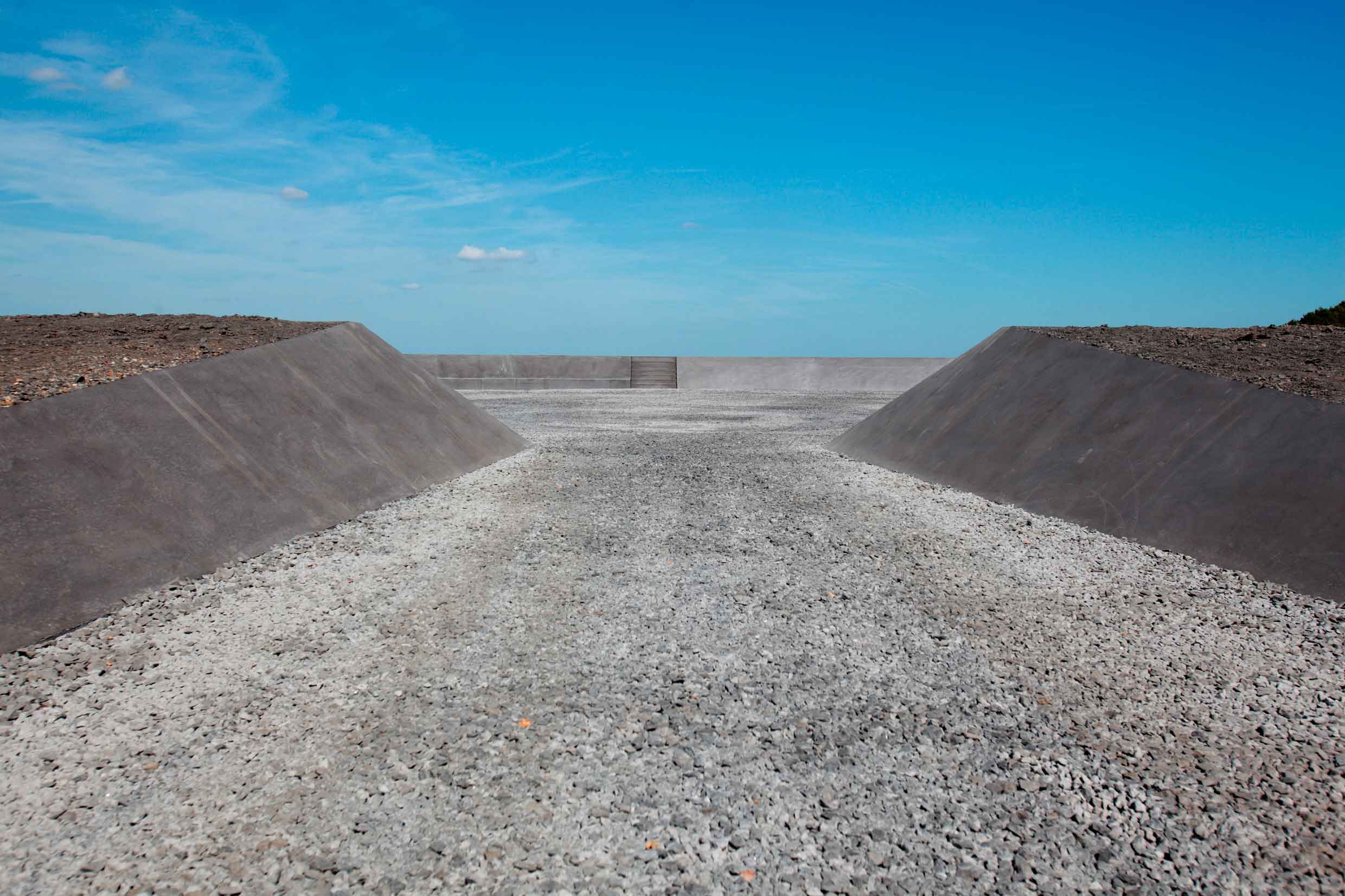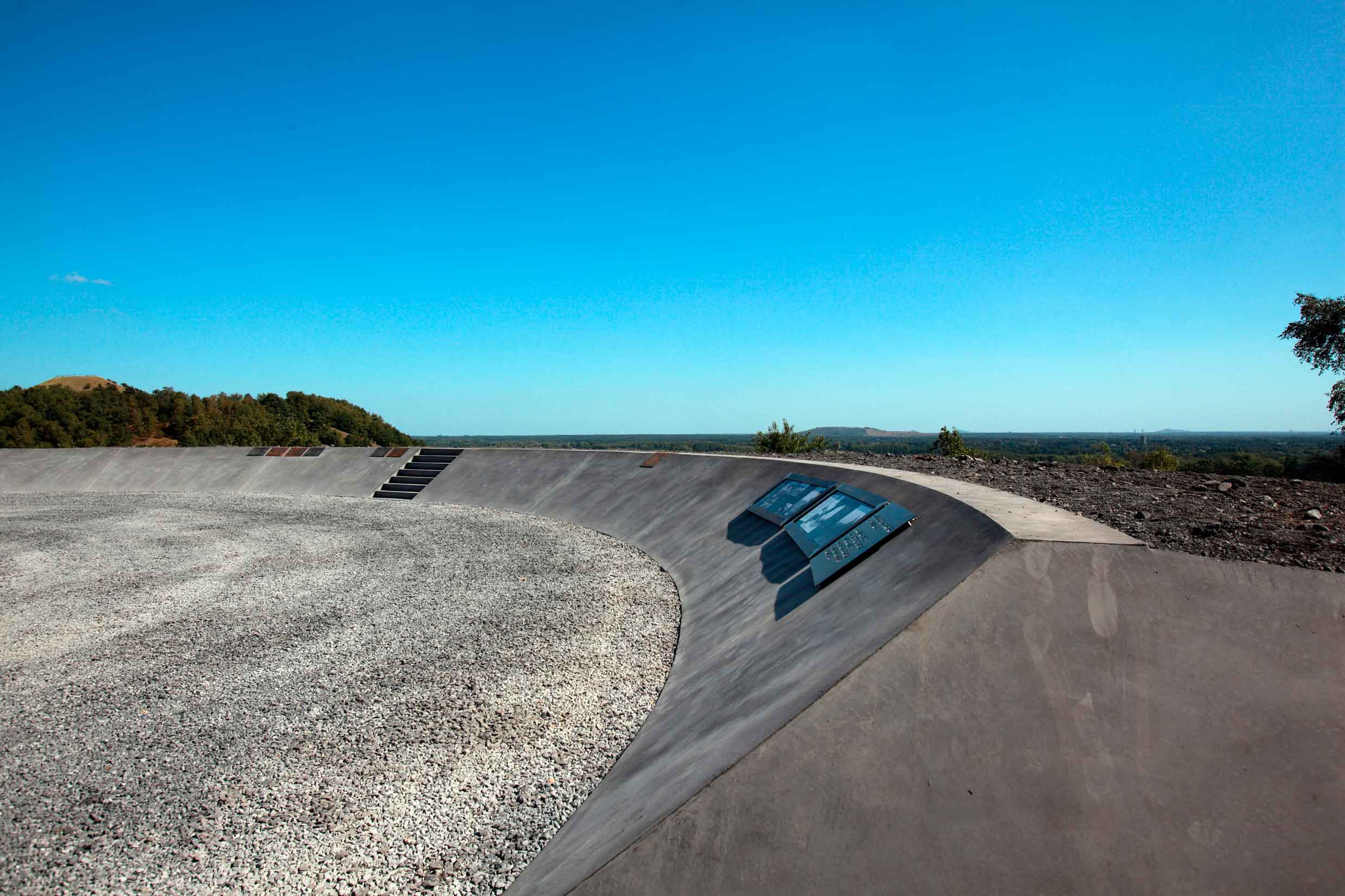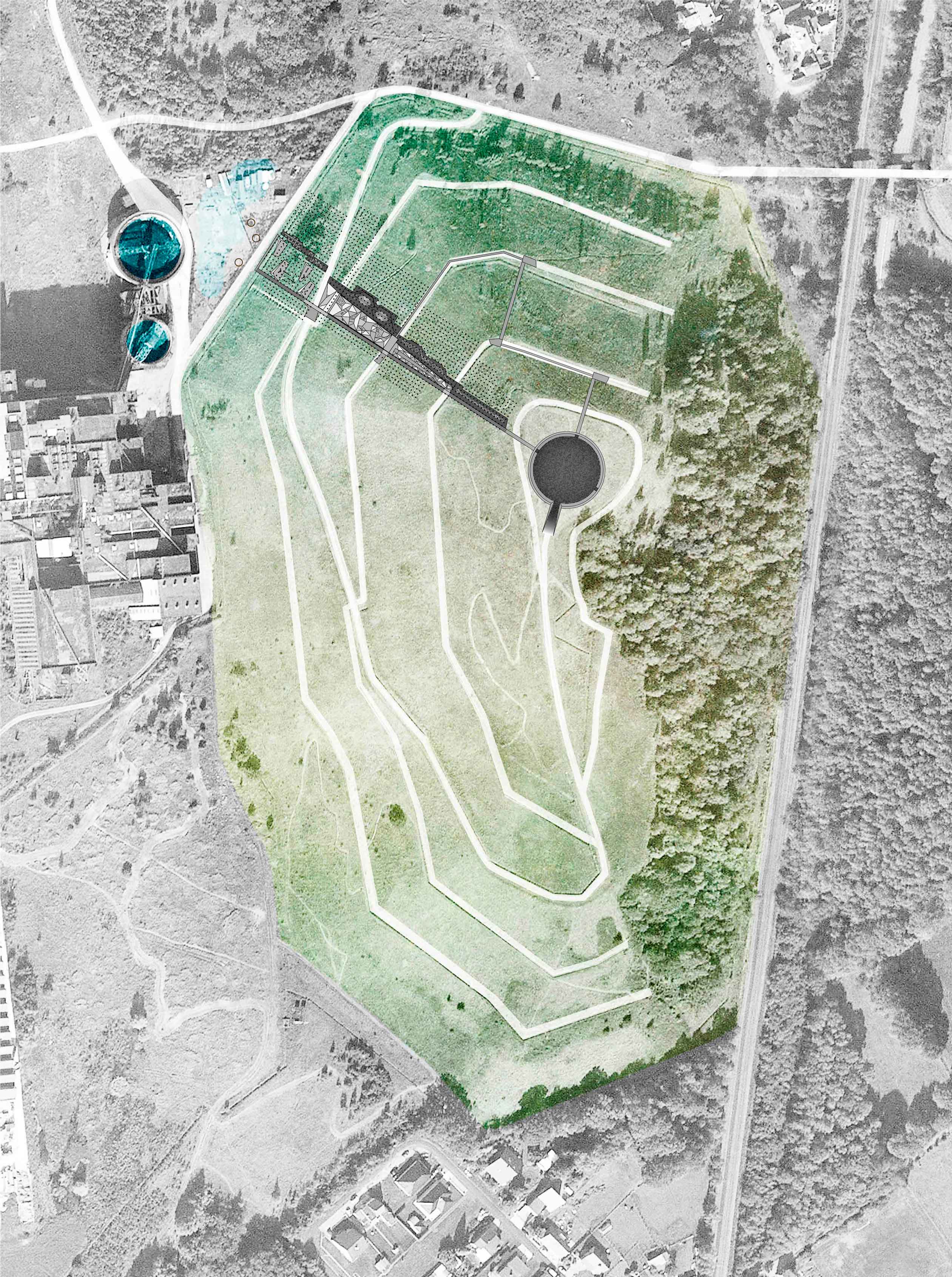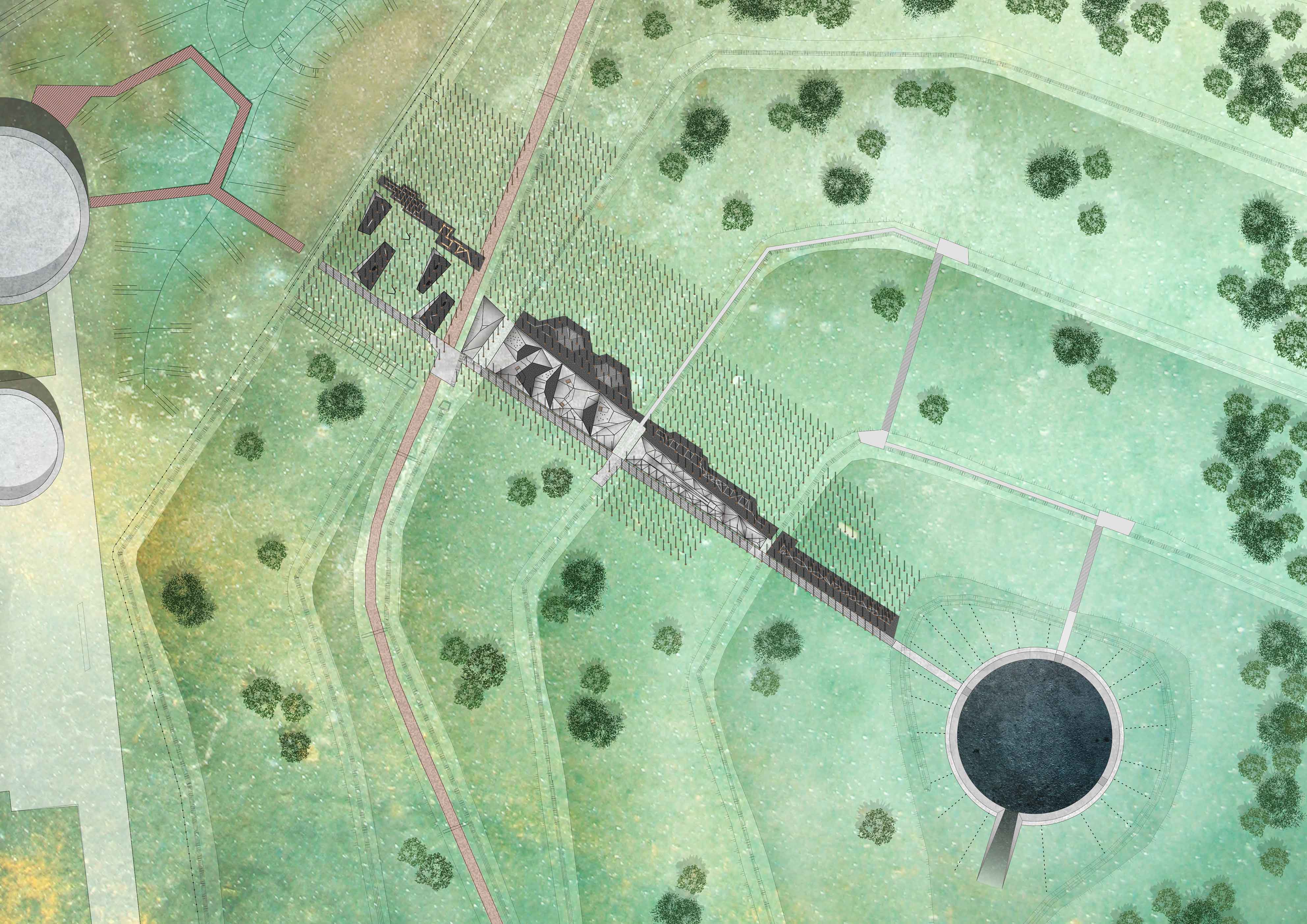Previous state
The “Be-Mine” tourist and leisure project was conceived with the idea of giving new life to a huge former mining site—the largest industrial archaeology space in all Flanders—of the municipality of Beringen in the Belgian province of Limburg. The old mining town took up the challenge of finding new uses for a sixty-metre mountain of debris resulting from the mining activity, as well as converting the mine’s old buildings into a cultural centre capable of turning the history of the place into an enjoyable leisure experience. Beringen had once been a prosperous mining town with a community of workers of Belgian and Turkish origins. After the mines closed and production ceased, the vitality of this mixed community began to disappear together with its livelihood. Hence, reviving the industrial site also entailed breathing new life into the local community and, accordingly, the memory of its shared experience.
Aim of the intervention
The team consisting of Carve and OMGEVING in charge of design, and Krinkels as contractor, won the international competition for designing a leisure landscape on the Beringen terril, which is to say an artificial hill made of mining rubble. The hill, together with the industrial heritage surrounding it, is of extraordinary magnitude, standing out as a landmark on an almost flat landscape. Bearing this factor in mind, the project worked with the idea of highlighting it as a large-scale point of reference as well as developing its potential as a place for recreation, which then required appropriate small-scale treatment so that it would be suitable for children. The values of the industrial legacy have been the guiding principles throughout the process of designing an unprecedented playscape. The mine’s terril had to be given new meaning with roots in the past while looking to the future.
In order to achieve the site’s connection between its working past and recreational present, the project was divided into three parts: a forest of wooden poles shaping a particular kind of landscape, a prismatic play surface on the flank of the terril, and a square made of coal at the top.
Description
The organising mainstay of the whole project is a long stairway that allows access at all levels. First, the forest of poles appears, referring to the mining past of the place when poles were used to shore up kilometres of underground tunnels. This section consists of some 1,600 wooden poles covering the northern slope from top to bottom in a grid pattern offering an interesting perspective. This is a powerful element of the intervention seeking to establish the relationship between the volume of rubble and its industrial history. The forest of poles contains an adventure circuit. Second, the prismatic play surface, a concrete slope more than twenty metres long, has horizontal and vertical surfaces. Inspired by conditions in the underground pits, this is the most visible element of the intervention and offers several options for playing since it is furrowed with channels for sliding down, as well as offering climbing surfaces with grips and footholds, and giant stepping stones. The geometry of the prismatic surfaces invites children to climb, slide, hide, and be discovered. The effect the designers sought to achieve here is that the higher people climb up the slope, the more difficult it becomes, which is seen as a way of inviting them to work together and help each other. Finally, at the top of the terril, sunk into a hollow as protection against strong winds and circular in shape, the Coal Square has been created in order to represent the “black gold” and, once again, connect the mountain’s past and present. If visitors stand in the centre of the square, they can no longer see the horizon and their attention is wholly focused on the clouds in the sky. The perimeter is designed with sloping sides so that it functions as a rest area while also containing historical information about the old mining lands. It is also possible to walk around the top of the terril and enjoy panoramic views of different parts of Limburg.
Assessment
The Be-Mine adventure mountain has been praised for both its design and end result. It is agreed that it has met the initial goals of becoming an attraction for visitors from outside the area thanks to its iconic function as a reference and its appeal as a fun place to visit, but also as an experience that is closely linked with the memory of the place. Moreover, the play spaces that have been created represent another kind of opportunity because the positive aspects they might stimulate, like overcoming difficulties, cooperation, and mutual encouragement, could evoke with their immaterial references the physical work of miners who needed to have total trust in each other.
The design received the MIPIM 2017 Award for the best project of regeneration. This prize is given, in particular, to interventions that contribute towards economic and physical revitalization of a population. The Beringen project was chosen as one of the seventeen most outstanding projects to be published in the yearbook “Landscape Architecture and Urban Design in the Netherlands” (2017).
Teresa Navas
[Last update: 24/11/2020]


